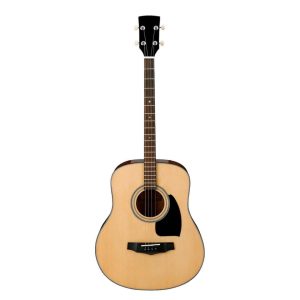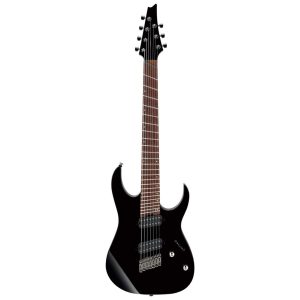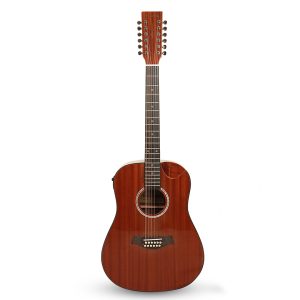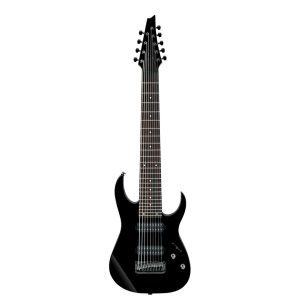Here’s the short answer some of you might be expecting: A typical Guitar has around 6 strings, but wait there’s more to it than meets the eye.
Some guitars have way lesser or way more strings than that. But which ones and why?
Let’s delve deeper into the types of Guitars and what determines the number of strings for a Guitar.
Types of Guitars and Their String Configurations
When we talk about guitars, the first image that comes to mind is often the classic six-string guitar. However, guitars come in a variety of forms, each with its own unique number of strings.
Let’s explore the different types and the rationale behind their string configurations.
Six-String Guitars
The most common type of guitar is the six-string guitar, used in a wide range of music genres from rock to classical.
The standard tuning for these guitars is E-A-D-G-B-E, providing a versatile range of notes for players.
 Four-String Guitars
Four-String Guitars
Typically associated with bass guitars, four-string guitars focus on the lower end of the musical spectrum. The standard tuning for a four-string bass is E-A-D-G.
These instruments are essential in creating the rhythmic foundation in many genres, particularly in rock, jazz, and funk.
 Seven-String Guitars
Seven-String Guitars
Seven-string guitars add an extra string, usually a low B, to extend the lower range of the instrument.
This configuration is popular in genres like metal and jazz, where players benefit from the extended range to perform complex riffs and chords.
 Twelve-String Guitars
Twelve-String Guitars
Twelve-string guitars have six pairs of strings, with each pair typically tuned in octaves or unisons.
This setup produces a rich, shimmering sound ideal for folk and rock music. Artists often use twelve-string guitars for their fuller, more resonant tones.
 Extended Range Guitars
Extended Range Guitars
Guitars with more than seven strings, such as eight or nine-string guitars, are considered extended range guitars.
These instruments cater to progressive and experimental genres, allowing musicians to explore broader sonic landscapes.
 Factors Influencing the Number of Strings for Guitars
Factors Influencing the Number of Strings for Guitars
Several factors influence why a guitar might have more or fewer strings. Here are some key considerations:
Musical Genre
Different genres demand different tonal ranges. For instance, metal musicians often prefer seven or eight-string guitars for the extended lower range, while folk musicians might favour twelve-string guitars for their rich harmonics.
Playing Style
A guitarist’s playing style can also dictate the number of strings they prefer. Soloists might opt for extended range guitars to access more notes and create more complex solos, while rhythm players might stick to six-string guitars for standard chord progressions.
Sound and Tonality
The desired sound and tonality also play a crucial role. Twelve-string guitars are chosen for their distinct, chorus-like effect, while bass guitars, with their fewer strings, provide deep, resonant bass lines.
Conclusion
While the six-string guitar is the most common and versatile, the number of strings on a guitar can vary significantly to suit different musical styles, genres, and playing techniques. Understanding these variations will help you select the right instrument for your needs and enhance your ability to express their musical creativity.


I just could not leave your web site before suggesting that I really enjoyed the standard information a person supply to your visitors Is gonna be again steadily in order to check up on new posts
Your blog is a true gem in the world of online content. I’m continually impressed by the depth of your research and the clarity of your writing. Thank you for sharing your wisdom with us.
Somebody essentially help to make significantly articles Id state This is the first time I frequented your web page and up to now I surprised with the research you made to make this actual post incredible Fantastic job
obviously like your website but you need to test the spelling on quite a few of your posts Several of them are rife with spelling problems and I to find it very troublesome to inform the reality on the other hand Ill certainly come back again
Nice blog here Also your site loads up very fast What host are you using Can I get your affiliate link to your host I wish my site loaded up as quickly as yours lol
I have been browsing online more than three hours today yet I never found any interesting article like yours It is pretty worth enough for me In my view if all website owners and bloggers made good content as you did the internet will be a lot more useful than ever before